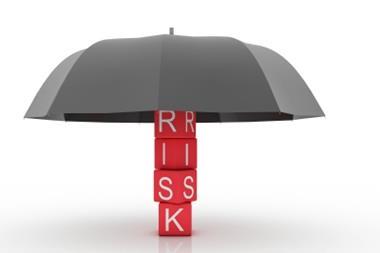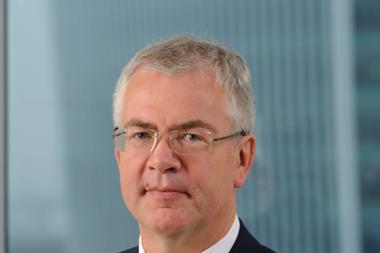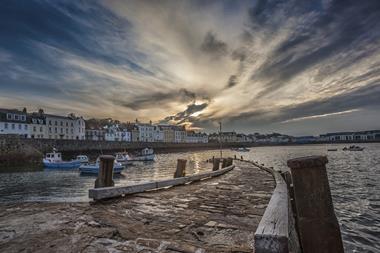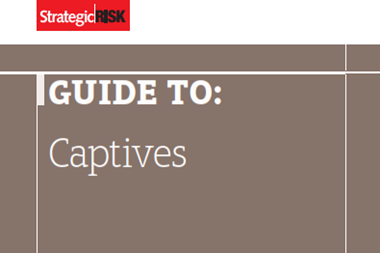Captive advisory and practice leader, Nick Gale says flourishing interest from SMEs and a growing awareness of non-traditional risks spell good news for captive insurance
In spite of the softer-than-soft commercial insurance market, captive insurance has maintained its appeal in the past 12 months with signs of growth picking up in Europe. On the publication of his firm’s seventh annual captive benchmarking report, StrategicRISK talks to Nick Gale, captive advisory and practice leader for Marsh EMEA about some of the trends affecting captive growth around the world.
The three largest domiciles of Bermuda, Cayman and Vermont continue to represent 36% of all captives, according to this year’s report. What are we seeing in terms of captive growth onshore versus offshore?
The study talks about redomestication, which we saw from 11 captives in 2013 versus 16 in 2012. A lot of that activity occurred within the US, with captives from one state moving into another state, typically the captive owner’s home. Much of that is driven by the Dodd-Frank reforms and the Nonadmitted and Reinsurance Reform Act that came out of that. The federal government is trying to simplify the way that surplus lines and procurement taxes are collected and, if you have a captive in your home state, you don’t have to pay these procurement and surplus lines taxes.
That’s led a number of US captive owners to reconsider: “Is Vermont or Bermuda still the right venue for me or should I redomesticate to my home state?” Moreover, there is an ever-growing number of US captive domiciles. We’re up to 36 or 37 now. Texas is one of the latest and it has taken a robust position to procurement taxes. As more states do that, it is likely to incentivise or lead clients to consider whether they should move back to their home state.
How are growth rates in the big offshore domiciles?
They continue to be attractive and grow at the same rate or slightly more than in the past. It’s maybe a bit overshadowed by the growth in emerging captive domiciles. However, it is worth remembering that many US states grow rapidly in percentage terms but they are starting from a smaller base.
Last year’s report spoke to this shift of onshore versus offshore in new formations. We would also bear in mind the number of offshore venues is limited – we count all the 36 US states as onshore and the five or six EU domiciles as onshore, so that leads to only a handful of offshore-led domiciles.
You would expect as more and more onshore domiciles come into the market a rebalance will take place between onshore and offshore. But the numbers in Bermuda and the Cayman Islands continue to grow year after year.
We are not seeing a lot of redomiciliation activity in Europe. The activity we see is ad hoc and the catalyst for onshore captives is whether you want to take advantage of European passporting of insurance, whether you want to direct write-in compulsory classes etc.
Have we seen any fallout from the EU’s impendingSolvency II Directive?
We did, and there were signs the market stalled for a number of years. But during the past six to 12 months, the enquiries about EU-led domiciles have picked up slightly. We have a number of applications with various regulators, which is an upward trend, and I think that’s because people are confident about it. It could be the fact that people understand Solvency II and the effect that will have now with proportionality, and now we have a fixed deadline for it. It could be also that it is the end of the Great Recession and capital is a bit freer.
Which type of captive is proving most popular?
Two-thirds of all captive vehicles continue to be single-parent captives and they continue to be the most popular. Protected cells (PCCs) and special purpose vehicles are specific niches for certain circumstances and are relevant, but there is not a fundamental shift where people are incorporating protected cells rather than traditional captives. Most clients prefer their own wholly owned vehicles – and that’s borne out by our numbers.
What are the reasons for establishing a captive insurer in 2014?
There could be 100 different reasons but anecdotally, from the clients we come into contact with, in Europe it is the same reasons it always was. It is a way of managing group risk appetite and subsidiary demand for low deductibles, and a way of centralising the insurance programme, accessing new markets… all those things for which captives have always been used.
The only trend maybe is in the type of clients forming captives. What is interesting is the number of small and medium-sized companies owning captives are growing. Private companies versus public companies is how we categorised it in the report. Fifty-two percent of captives say they were private companies and, had we had done this study 10 to 20 years ago, it may have been as small as 10%-15%. So increasingly, captives are attractive to a different type of client.
Barriers to entry are lower. PCCs are part of that, and micro captives in the US: the 831(b)s. The advent of that has broadened the captive appeal to a wider market and that has fuelled captive formation globally.
Why are we seeing interest in captive insurance at a time when rates in the commercial insurance market are so low?
The insurance market is good with the traditional risks but more and more captives are being used for the uninsurable or non-traditional risks. We are seeing risks such as cyber liability, surety, crime and fiduciary – risks that clients have not traditionally insured in the market – finding their way into captives in growing numbers.
So there is a growing trend to use captives for risks that are not in the commercial market and therefore these are not subject to the soft market cycle. The captive is used to warehouse and manage and track exposure data for business risks that they do not insure, so that soft market has an effect but it has not completely dried up captive formations like you would expect it would.
The industry is realising that there are more risks out there than we currently buy insurance for. The insurance market does not have a solution for every risk and concern and risk managers do not have a budget to insure every risk.
People have had some of these risks forever – supply chain, for instance. Do we want to pay a commercial premium for something we have lived with and maybe not completely understood or appreciated? It is hard to justify in some instances, especially in an economic downturn, going to the chief financial officer and saying: “I want to add more insurance premium for these risks we have always had.” It is probably a more difficult. The captive has been the solution.
According to your report, only a third of US captive owners treat their captives as insurance companies for US federal income tax purposes. How big a driver is tax in choosing a location for a captive?
One of the factors becomes what is the most tax-efficient domiciles, but it is just one of a number of decisions that clients consider. Once you have committed to forming a captive, then you may as well make it tax efficient, but tax is not a large driver.
We have many conversations with clients forming new captives to make it tax-registered in your home country. You will find a lot of US-owned captives in Bermuda and Cayman are taxable entities in the US and a number of UK-owned captives pay tax in the UK, even though they may be in Guernsey or the Isle of Man. So it is an overrated driver but it is certainly helpful. Most captives have to wash their own face, they must be cost-neutral so changes in tax law can tip the balance and make them slightly more beneficial. SR




















No comments yet